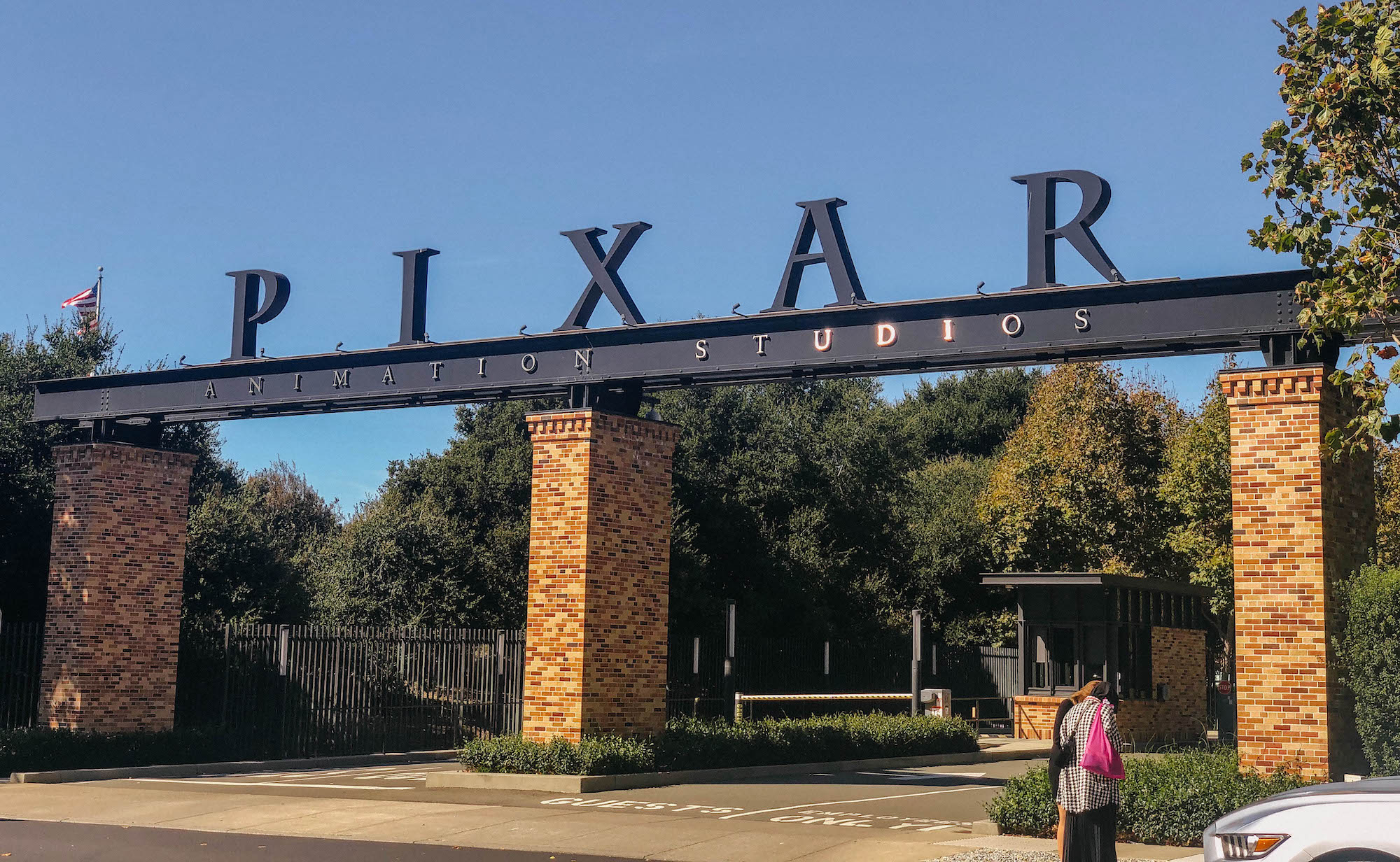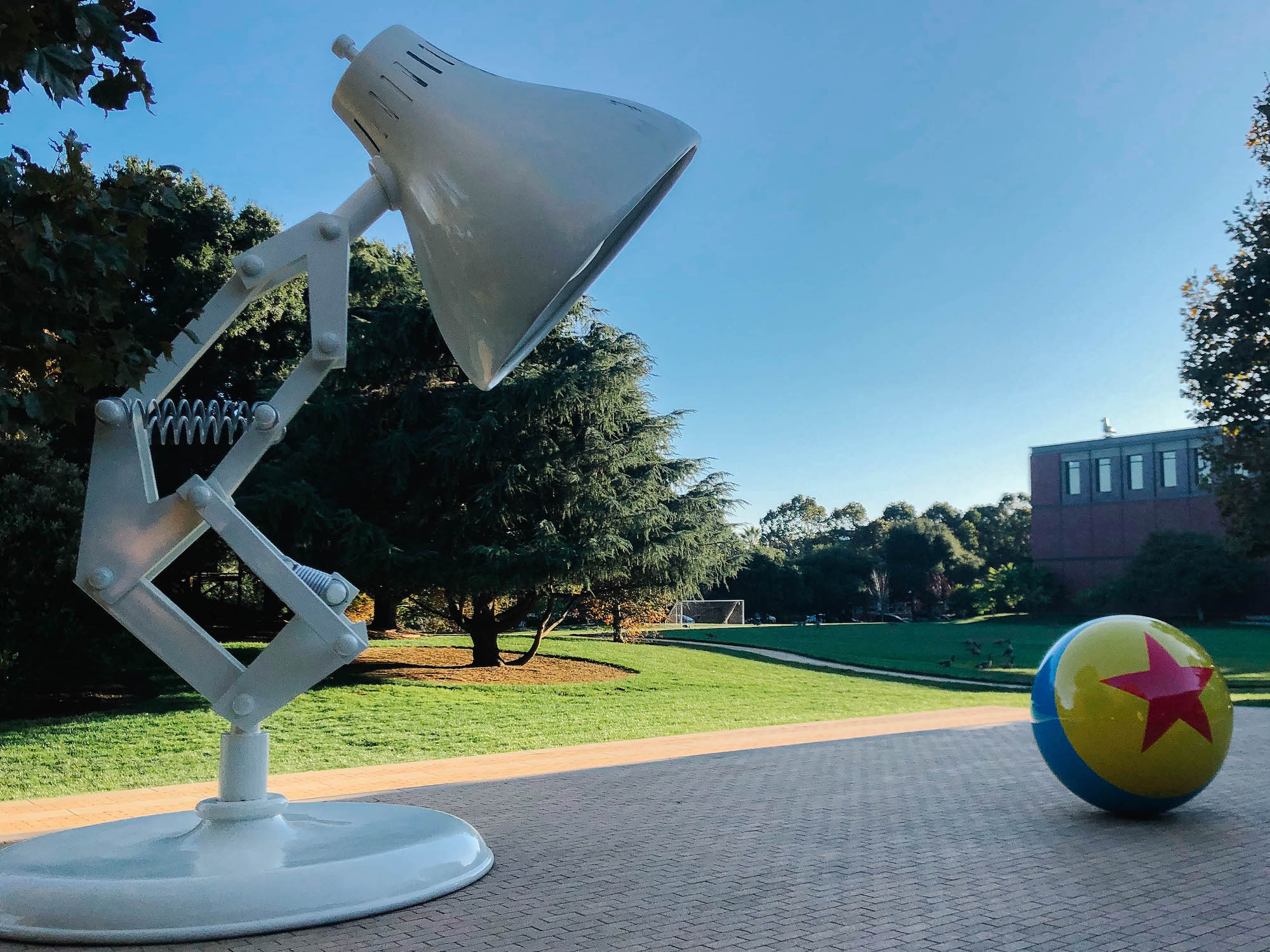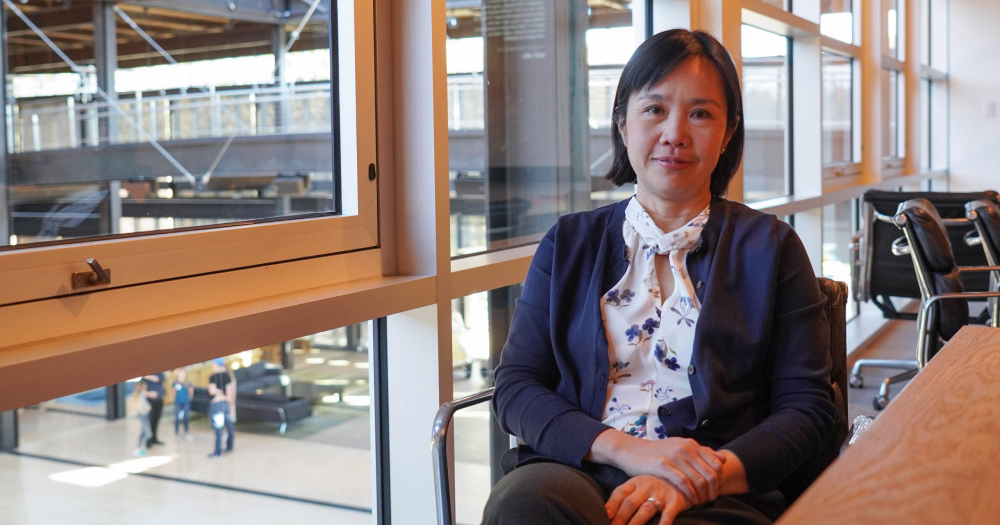When you’ve finally caught the latest Pixar film “Onward”, you probably won’t notice that one Singaporean has had her fingerprints all over the movie.
That’s exactly what Audrey Wong, 48, will be hoping for.
Speaking to Mothership at Pixar’s studios in California, the simulation technical director describes her job as dealing with hair, clothes, and fat.
“Like jiggly body fat,” she says giggling.
What she does, Wong elaborates, is take what animators have already put in motion and embellish elements within it with a sense of realism.
“We try to make the clothes as realistic as possible because if it’s not realistic you catch it immediately. And if you don’t catch anything it means I’ve done my work really well; everything looks really natural and looks like the physical world.”
“I’ve touched most of the parts of the movie,” says Wong, who explains that "Onward" in particular presented the challenge of being a magical world.
The film is based in the universe of two teenage elf brothers, Ian and Barley, who embark on a magical quest in order to spend one last day with their deceased father.
The project saw Wong working to make realistic and natural the movements of fantastical things like “magical wind, and magical effects which we have to imagine”.
&t=1s
Working at Pixar for 20 years
Wong beams and sparkles as she speaks about her work, as if she had stumbled upon it serendipitously yesterday.
This demeanour belies the fact that she’s actually been at Pixar for 20 years now, and has worked on some of the animation’s studio’s biggest films like the “Toy Story” series of films (two to four, she says), “Ratatouille”, “Up”, and “Finding Dory”.
“Every film is a challenge, every film has different things. That’s actually the fun part of it — like every film is different. You’re not always doing the same things. Like I’ve been doing this for a while but it’s still hard, it’s still a challenge, nothing is the same.”
One example of the ever-changing nature of the job comes from a film that Wong deemed her favourite of all the films she has worked on.
“I think Coco’s my favourite film because of all the dresses, it’s so colourful, and there are all these movements.”
“We hardly do anything with dresses,” she says in her typically effervescent manner. “There are really nice dresses in there”.
Yet, beyond just looking nice and fulfilling a feminine aesthetic taste, the dresses provided a unique challenge to Wong, one that she savoured taking head-on.
“The movements are different right? I mean compared with like modern clothes, the Mexican dresses, they have ruffles, they move differently.”
As she explains, different materials naturally move in different ways.
“Like you’re wearing a soft hoodie or sweatshirt and the wrinkles are softer, as opposed to a business jacket where the lapels are harder there are shoulder pads. All these things need to be tuned and customised. And even movements, the way a jacket moves is different than how a soft cardigan moves.”
 Image by Andrew Koay
Image by Andrew Koay
From NUS Engineering to California
Translating all this into an animated film involves a fairly complex process (at least to our untrained ears):
“We run it through a physical simulator — like physics — we simulate cloth, like real cloth, like denim and all that and we tune the parameters.”
And if those words sound like something out of an engineering textbook, that’s because Wong is exactly that — an engineer by training.
“I just stumbled into this field,” she says when asked about how someone with a Bachelor’s degree in Engineering from the National University of Singapore ended up in California at the Pixar Studios.
In fact, where she is now couldn’t be further from where the younger version of Wong had envisioned.
“I wanted to be doctor,” she says before bursting out in laughter.
“I actually wanted to be a surgeon, and then there was this thing called a computer, which was really interesting. I got really hooked onto all the computer stuff. And then software was really cool, and then like graphics was even cooler cause you get to see stuff.”
“One thing led to another,” says Wong.
She eventually found herself sitting for a Master’s in Computer Graphics at the prestigious Ivy League institution Brown University.
At the turn of the century, Wong tells us, the world of computer graphics was full of unknowns and possibilities, a prospect that really appealed to the Singaporean.
“At that time graphics was so new, and I mean there were so many things that we couldn’t do and so many open-ended questions out there. It was a really interesting field.”
 Image by Andrew Koay
Image by Andrew Koay
In her graduating year, Pixar would turn up at the university’s campus on a recruitment drive.
"Toy Story" had been released by the studio a few years prior in 1995, wowing audiences with the technical innovation weaved into the the film’s entertaining narrative.
Working at a company like that intrigued Wong, even if she wasn’t quite sure she wanted to be in the business of making movies.
“I signed up and next minute, before I knew it, I was in California.”
“Like, okay?” she says laughing (as always), and apparently still reeling from the free-wheeling nature of her early career.
A true Singaporean abroad
There are some idiosyncrasies unique to working in the creative industry that don't seamlessly mesh with the logic and rationality of someone schooled in dealing with hard numbers:
“Working with really artistic people, it's challenging because sometimes you don’t see the same vision."
And of course, the industry is still “very male-centric”, Wong says, without further elaboration.
However, she believes that her Singaporean roots have stood her in good stead in her 20 years of working in an industry and country that was initially very foreign.
“Singaporeans, we’re very cosmopolitan,” she says upon reflecting on her challenges. “We deal with a lot of people very easily.”
There is one thing though, that growing up in Singapore never prepares you for: living without familiar culinary comforts.
“Mee Siam. You can’t get good Mee Siam here,” she says as the conversation drifts towards home.
“Durian as well,” giggles Wong.
“We just went back and I had my durian. All the Nonya Kueh too. You can’t get Nonya Kueh here, it’s really really hard.”
Stories of Us is a series about ordinary people doing extraordinary things. Be it breaking away from conventions, pursuing an atypical passion, or making the world a better place in their own small way, these stories remind us both of our individual uniqueness and our collective humanity.
Top image by Andrew Koay
If you like what you read, follow us on Facebook, Instagram, Twitter and Telegram to get the latest updates.
